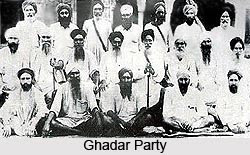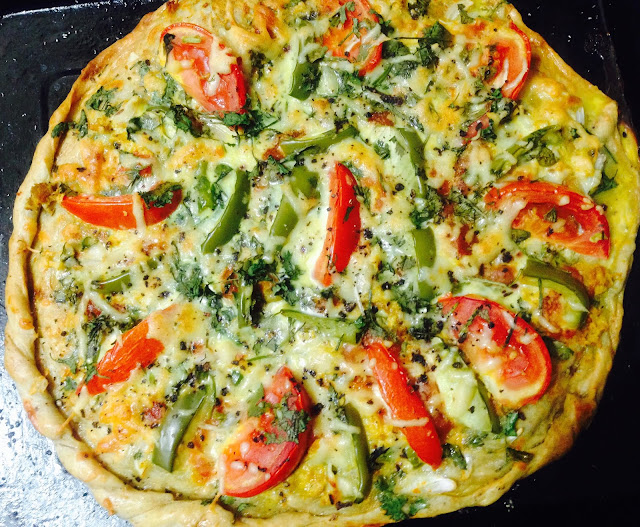International and Global Anti-Movement
The international and global anti-movement
The international and global anti-movement was written by Heather Streets-Salter. The author tries to show that the anti-colonial movement was not a local issue but as a worldwide problem and it needed international and global solutions. It was not limited to national borders. The problem of the empire needed global resources and solutions. There were many international and global movements but here it is focused on three in particular: revolutionary Indian nationalism, the phenomenon of pan-Islam, and international communism.
In the nineteenth and twentieth century, there were many groups organized to fight against colonialism. Ghadar was a global anti-colonial movement that gathers all the Indians globally against a British ruler. The Ghadar party was founded in 1913 which was in San Francisco In the United States by Indians living in there. Many of the members were the Sikh peasants from the Punjab, who had gone there to escape conditions of poverty and land hunger at home. However, in the United States and Canada, they faced discrimination by white communities. The vision of the party was to spread the idea of revolution to convince Indian men around the world. So that they can get help with money, weapons, and soldiers. They published a newspaper called Ghadar in San Francisco, United States, Canada, India, South and East Africa, Hong Kong, Burma, Malaya, and Singapore. Har Dayal was one of the founding members. They also targeted Indian Muslims of the Indian army. They wanted to connect International Indian people throughout the world. They also persuaded Germany and got help as they were enemies of Great Britain. They gave weapons, money, and also a ship. Several thousand men returned to India from abroad between 1914 and 1915. They made contact and recruited in Punjab and Bengal. Their plans were betrayed by informers and 136 were convicted and 42 were sentenced to death. At the end of World War, I German were defeated by the British and it was tough for Ghadar party as most of the leader was arrested. Still, the party continued to exist until Indian independence.
In the late nineteenth century, the Pan-Islam movement began to unite Muslim believers around the world under the authority of Caliph. It includes Muslims around the world whether colonized or not. There were other two anti-colonial pan movements were pan-Africanism and pan-Asianism. There were many pan- movement happened at the same time because transportation and communication technologies allowed people to move and share ideas around the world. Pan-Africanism was a political movement to get freedom by African descent from racial oppression all over the world whether in America, Europe, or Africa. Afro-European, African-American, and African came into contact and made strategies to achieve independence for colonized Africans and racial equality for African descendants everywhere. There was a philosophy of negritude developed by Aime Cesaire of Martinique and Leopold Senghor of Senegal, which posited that blackness was positive and beautiful quality rather than a negative one. Pan-Asianism was a movement for the unity of Asian people everywhere against the global dominance of the west. When Japan defeated Russia in the Russo-Japanese war of 1904-1905, many colonized Asians believed that Japan held the key to overcoming oppression. The most aggressive anti-colonial movement of the pan- Islam began by Sultan Abdulhamid II. He was an Ottoman Sultan. Thousands of Muslims from the East Indies and British Malaya were participating in Hajj in Mecca and ideas spread this way. The Ottoman became an alliance with European central powers. They fought with Germany in World War I. However, It was unsuccessful as the defeat of the central powers in 1918, The Ottoman lost powers it once had.
International communism is the ideology of getting independence in colonial states. The people wanted equal rights so that poor peasants and urban workers get relief from poverty. They also wanted gender equality. There was an anti-colonial movement in East Asia and sub-Saharan Africa. In 1919, Soviet leadership established an institution called the Communist International also known as Comintern. They spread it in many countries and many communist parties form. There was a violent revolution. The Soviet Union provides funds for weapons and as well as training to small parties. In 1930, Portugal dominated Angola and exploiting resources. For the independence three groups formed as MPLA, UNITA, and FNLA. MPLA was inspired by the pan-African movement. After 13 years of war, Portugal lost. Each group fought to each other to take over full control. Yugoslavia and Cuba helped MPLA with soldiers and weapons. The United States and South Africa support UNITA and FNLA. Finally, MPLA won and take leadership.
The anti-colonial movement was for national independence and they relied on global networks. The author has shown us how those movements were globally connected. They made contact and spread ideas from distant areas. They create a good relationship with other countries and work together against the ruler. As a result, it became a worldwide problem that needed to wipe out.




wonder full article on this topic, looking forward to read more.
ReplyDeleteGreat post!
ReplyDelete